Alaska has a wide range of USDA hardiness zones from small amounts of temperate zone 8 through to sub-zero zone 1a. Favorite flowers like dahlias, fuchsias, begonias, and pelargonium won’t cope with an Alaskan winter, but some beautiful flowers bloom in the summer and tough it out through the cold spells. Here are the best flowers to plant in Alaska: twelve amazing cold-tolerant options.
1. White Yarrow
Native perennial white yarrow is a hardy Alaskan flower that blooms pollinator-attracting white and yellow flowers from spring to fall. Yarrow’s tiny flowers sit almost flat, creating a landing platform for hoverflies, bees, and butterflies.
It’ll reach three feet tall and spread five or so inches in a clump. Its lacy foliage copes with humidity, heat, and drought, and isn’t appealing to hungry rabbits. In winter, this perennial dies down to ground level and re-emerges in the spring.
Plant white yarrow in a sunny spot with moderately fertile, well-drained soil. It’ll flower in late spring.

The flowers of the common yarrow are attractive to pollinators, especially hoverflies.
©Starover Sibiriak/Shutterstock.com
2. Alpine Aster
Alpine asters grow low to the ground in clumps of blue-purple flowers with rich yellow center circles. Because they only reach a few inches tall, they’re protected from cold wind and offer pollinators food in a sheltered spot. These short, cold-tolerant flowers actually reach several inches wide on thin stems that bend in stiff breezes. They’re perfectly adapted to cold conditions, so it’ll come as no surprise they’re native plants and one of the best flowers to plant in Alaska.
Pop these nectar-rich hardy flowers in a sunny rock garden, in front of the border, or a low container. They tolerate sandy or chalky soil plus droughflowering towards the end of summer. Asters last into fall if regularly dead-headed.

Alpine asters grow close to the ground to shelter from harsh Alaskan breezes.
©Volodymyr Yakovyna/Shutterstock.com
3. Forget-Me-Not
Alaska’s state flower is the tiny blue flowering forget-me-not. It’s a native plant that thrives in mountain meadows.
Forget-me-not reaches 12 inches tall with lacy dark green foliage and small but perfectly formed pale blue blooms that burst from June to July.
Cold tolerant forget-me-nots like a sunny position in moist, fertile soil where they attract pollinators. This pretty little flower is best when it’s grown in a swathe at the front of a flower border.
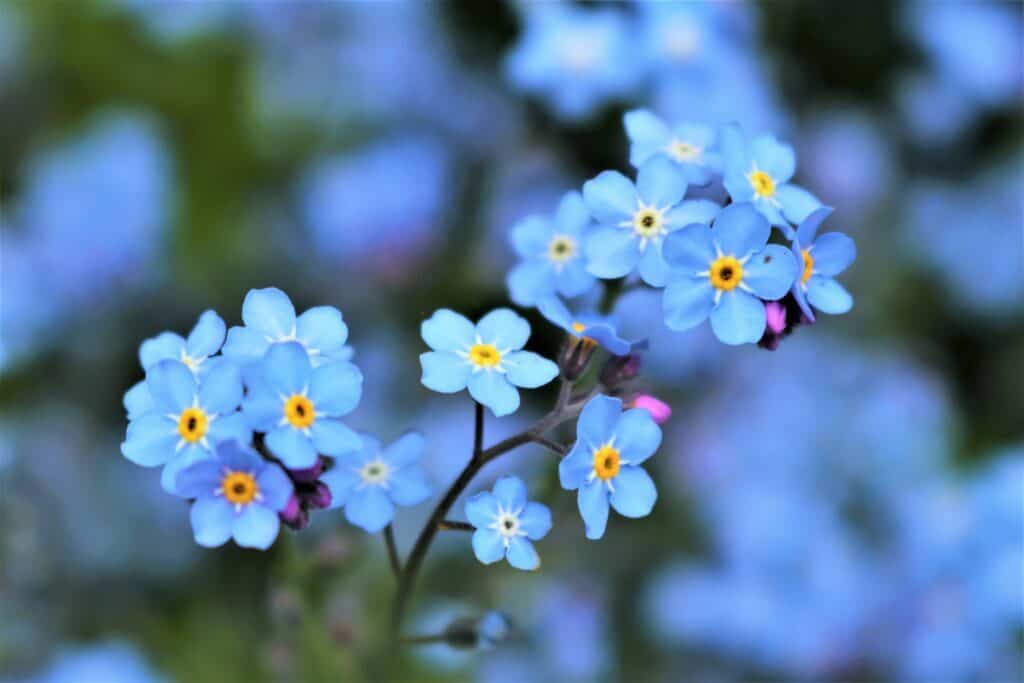
True blue forget-me-not is Alaska’s state flower.
©iStock.com/Agnieszka Klimaszewska
4. Dwarf Dogwood
Dogwood is chiefly grown for its color-changing glorious winter stems, but native Alaskan dwarf dogwood is a bit different. It only reaches four to eight inches tall and spreads across the ground, crouching from cold, stiff breezes. This habit makes it one of the best flowers to plant in Alaska.
This beauty produces large white flowers, called bracts, in spring, and its dark green foliage matures to deep red in fall. Fallbright red berries provide food for hungry birds but are a bit tart and sharp for us! In the wild, dwarf dogwood grows best in low alpine conditions, damp woodlands, and meadows. In a garden, it’ll suit most well-drained sunny spots that bathe in sunlight for most of the day.

Dwarf dogwood grows near the ground, attracting bees and butterflies.
©iStock.com/cpjanes
5. Wild Iris
Beautiful wild iris is so stunning you’d think it couldn’t survive in Alaska, but it’s a native plant that tolerates harsh weather by dying down to its rhizome over winter.
Wild iris is an Alaskan garden staple. Its purple-blue flowers top strong stems that are surrounded by long protective thick leaves. They range from six inches to two feet tall, so they suit the front and mid-spots of a flower border. Many folks grow wild irises in containers, which is fine if you remember to water them regularly.
Dramatic wild iris is one of the best plants for Alaska, but its roots and seeds are dog and cat-toxic.

Vivid wild iris has dog and cat-toxic seeds and bulbs.
©JT Fisherman/Shutterstock.com
6. Red Currant
Fruit bushes that suit Alaska’s cold climate don’t number in the hundreds, but red currant is one toughie that tolerates sub-zero temperatures and comes back fighting each spring.
This deciduous shrub loses its foliage in fall and appears dead until spring sunshine stimulates new growth. The red currant bush’s aromatic scalloped leaves and beautiful, fragrant urn-shaped flowers dangle like bells and bring all the bumblebees to the yard.
Once pollinated, red currant flowers mature into, sweet round red currants during August. If you don’t want them, the birds do!
Plant red currant bushes in well-drained fertile soil in a spot that catches the morning sun.
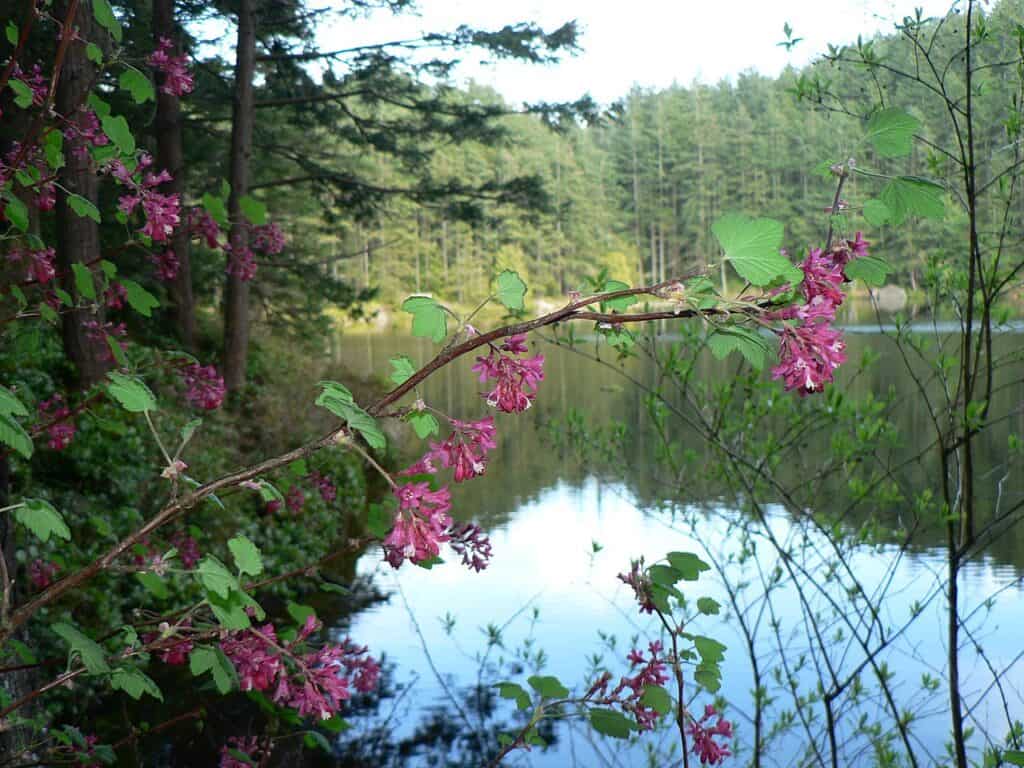
Red currant bushes produce attractive urn-shaped fragrant flowers in spring.
©Walter Siegmund / CC BY-SA 3.0, , via Wikimedia Commons – Original / License
7. Western Columbine
Wild native western columbine grows across Alaska near woodland, forests, and alpine meadows. It’s a deciduous plant with 30-inch-tall stems atop a clump of light green foliage. Two-inch-long bell-shaped flowers nod in the breeze, attracting pollinators in vibrant shades of red, purple, and yellow.
Western columbine is popular with Alaskan gardeners because its beautiful flowers belie its tough nature. This beauty withstands sub-zero temperatures by dying down to its roots over winter.
It enjoys a sunny to part shady position and flowers from June to July. Give western columbine space to spread in moist soil that catches plenty of sun.
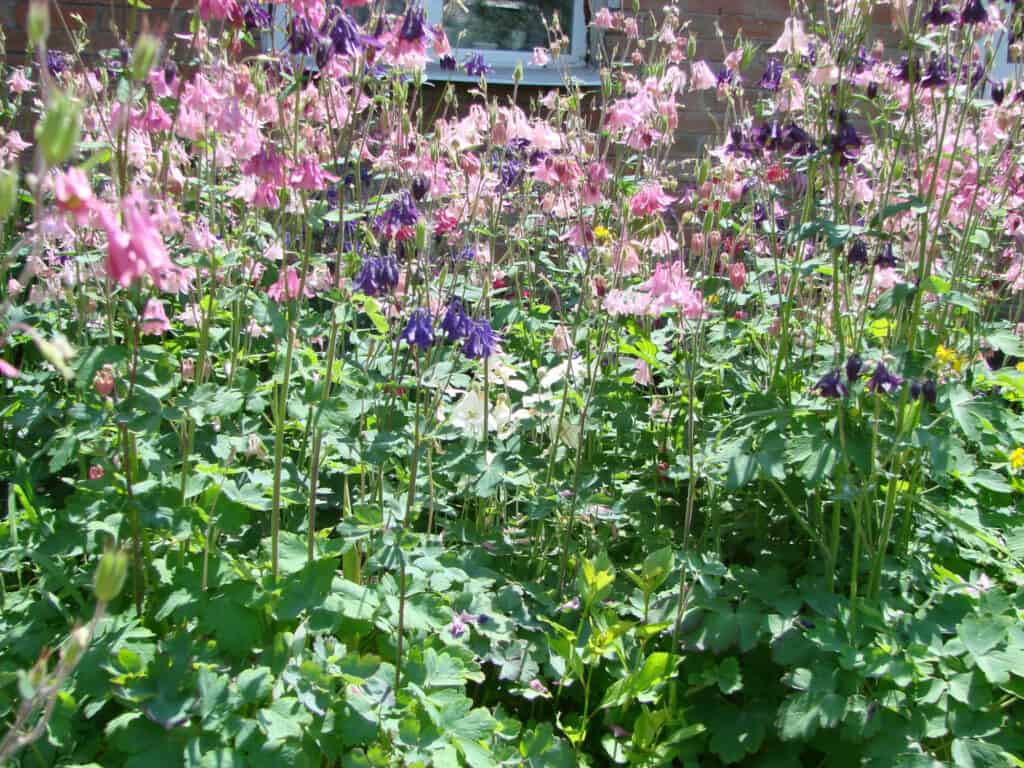
Western columbine blooms pink, white, or purple flowers in late spring.
©Michiru13/Shutterstock.com
8. Rose of Sharon
An excellent landscaping plant, the rose of sharon is a tall, cold-hardy Alaskan option if it’s planted in full sun with shelter from cold winds.
It’ll reach six feet tall and spread over four to six feet each year, dying down to a central branch in winter. Over winter, Alaskans should place bubble wrap or horticultural fleece over the stump.
Sometimes called mallow, this glorious shrub blooms large vase-shaped flowers in pink, red, blue, or white, depending on the variety. Large bumblers adore this flower. It’s a joy to sit nearby and listen to their hum in late summer.

Rose of Sharon is a large landscaping plant with pollinator-friendly flowers.
©iStock.com/peterspiro
9. Fireweed
Alaskan wildflower fans know fireweed, whereas British fans know it as willow herb. It’s a beautiful, tall pink wildflower that lives in coastal regions, meadow pastures, and poor soil. It’ll reach up to five feet with its tips covered in pinky-purple blooms from mid-summer until fall. In fall, its green foliage turns vivid shades of purple and red.
This is a low-maintenance flower that will thrive if it’s given moist soil in a sunny spot. It looks best strewn in a large swathe across a wildlife-friendly garden.
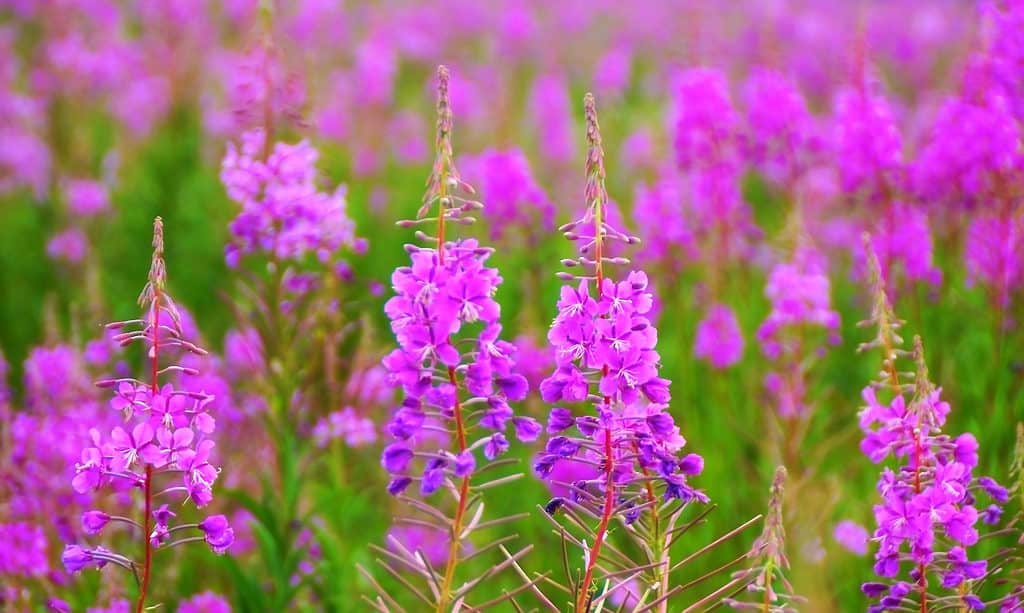
Fireweed is a low-maintenance plant for wildlife-friendly Alaskan gardens.
©Real Moment/Shutterstock.com
10. Rhododendron
Hardy rhododendrons are one of the best flowers to plant in Alaska for early color and structure. Some varieties last for hundreds of years and grow to 30 feet tall in all directions. One of the most cold tolerant for Alaskans is the Yaku Prince cultivar. It’s a hybrid with a fuzzy leaf back that insulates its foliage in winter and allows photosynthesis to continue despite freezing temperatures.
Yaku Prince has typical thick, leathery green rhododendron foliage and large bright pink flowers in spring. Plant it under the shade of taller trees or near a sheltering fence for the best growth. This evergreen shrub likes early morning sun, afternoon shade, and plenty of water because its roots are shallow.
Container-grown rhododendrons need insulation wrapped around the pot during Alaskan winters.
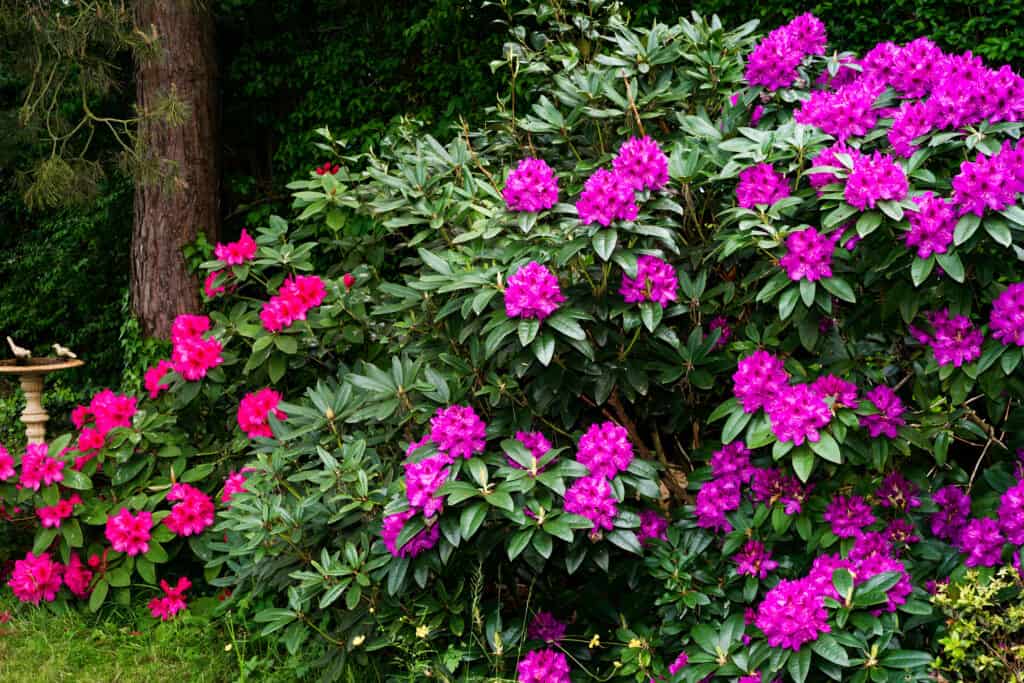
Hardy rhododendron prefers a spot beneath the shelter of larger trees.
©iStock.com/Jean-Luc Farges
11. Daffodils
Bulb-based daffodils emerge in early spring, but some cultivars even poke their yellow bonnets up through the snow!
Plant daffodil bulbs outside in fall, approximately six weeks before frost is due, so they have time to synthesize and emerge in spring. They require a period of cold beneath the soil to flower. White-petalled Actaea, also called “Poet’s Daffodil,” is an excellent cold-hardy choice for Alaska.
Daffs enjoy full sun and shelter from the cold prevailing wind. Nip off dead flowers, but leave their foliage to die down over the following months rather than cutting it off. This trick allows the bulb to gather nutrients and keeps it healthy and strong over an Alaskan winter.
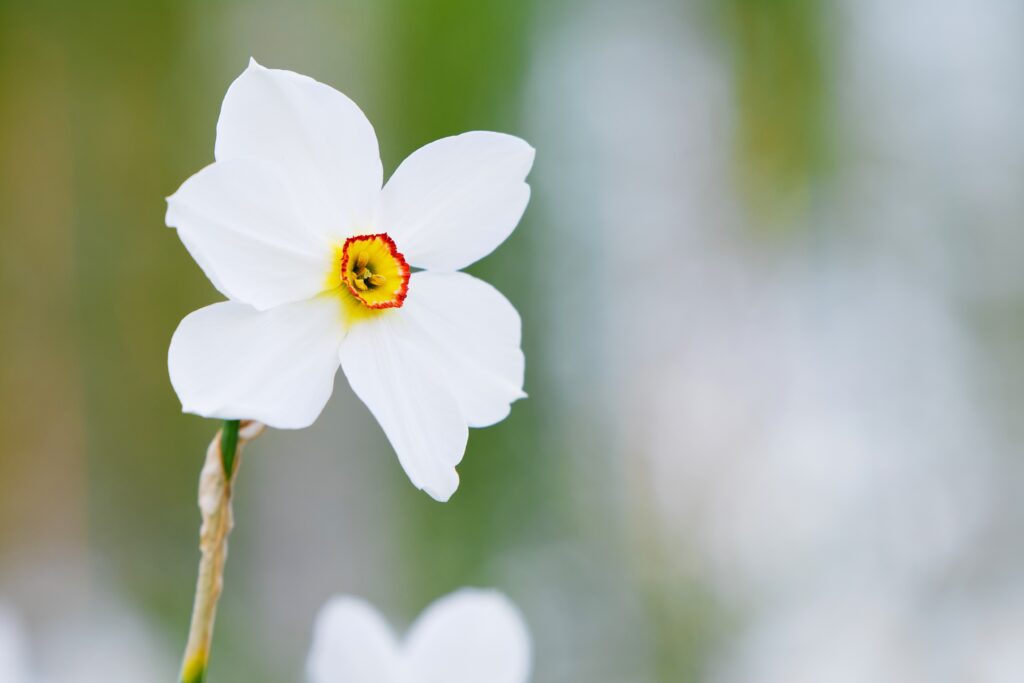
‘Actaea’ Poet’s Daffodil is a good cold hardy choice for Alaska’s gardens.
©Erkki Makkonen/Shutterstock.com
12. Sitka Rose
Sitka rose is a pretty five-petalled wild rose that thinks nothing of Alaskan snow. It’s a prickly rose found across the southcentral, southeastern, and interior regions in woodland-edge hedgerows and meadow margins.
When grown in full sun, it produces two-inch-wide pink blooms in mid-summer with significantly strong perfume. Large tomato-like hips mature from pollinated flowers. This beautiful cold-hardy rose is what gardeners call “vigorous.” That means it spreads and requires a watchful eye and a sharp pair of secateurs to prevent it from outgrowing its welcome.
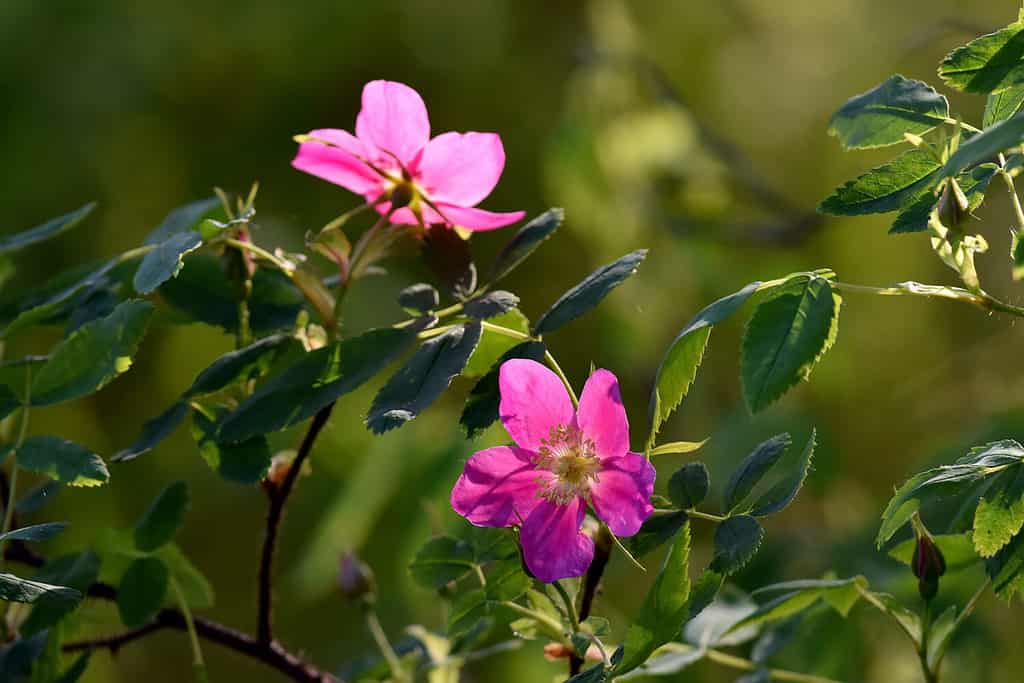
Sitka rose is hardy enough to tolerate Alaska’s climate.
©JT Fisherman/Shutterstock.com
Thank you for reading! Have some feedback for us? Contact the AZ Animals editorial team.








